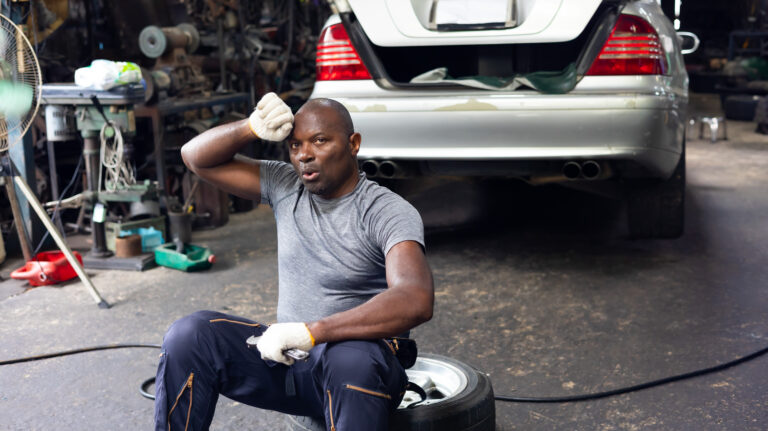Cooling System Engine Maintenance
If you’re someone who frequently browses the small ads for affordable cars like I do, you’ll notice a prevalent issue – many cars suffer from head gasket failures, indicating a neglect of proper cooling system maintenance. The cooling system in your typical family vehicle is a complex entity, comprised of various moving parts, plastics, harsh chemicals, rust, and minerals that can accumulate and impair its functionality, eventually leaving you stranded on the roadside. As your car ages, it becomes crucial to keep tabs on a few essential aspects. While winter may still be lingering, it’s advisable to start addressing common issues before the onset of the first scorching day.
SAAB’s Coolant Bypass Valve
A commonly occurring issue, particularly in SAAB vehicles, involves the malfunction of the coolant bypass valve. The heater core, situated in your dashboard, receives engine coolant redirected from the main lines, channeling it through the rear of the engine bay into the cabin. At this specific point, there exists a diverter valve, typically made of plastic or metal, which opens and closes in response to the requirements of your vehicle’s heater.
As the valve ages, it may become prone to stickiness, leaks, and, in many instances, complete failure. A common indication of this issue is an owner returning to their vehicle after grocery shopping, only to discover a substantial coolant puddle beneath the car. In severe cases, this failure can lead to hot coolant spraying within the engine bay or the car itself. Although the extent of the issue varies across different models, if a coolant bypass valve has been in use for over ten years or has covered more than 100,000 miles, it is advisable to consider a replacement. Opting for this inexpensive maintenance task provides peace of mind, as waiting for a failure may not be worth the risk.
Don't Forget the Water Pump
Water pumps fall into a similar category, although their indications of failure typically involve less puddling and more issues with overheating. Certain BMW models, in particular, suffer from plastic impeller water pumps that can wear out and break prematurely. This can lead to overheating, posing the risk of head gasket or engine failure if the driver doesn’t closely monitor the temperature gauge. For cars equipped with this type of water pump, upgrading to a metal pump is a wise investment, especially if you plan on keeping the vehicle, and the upgrade is often cost-effective. A opportune moment to replace your water pump is during the servicing of belts and pulleys, as the engine’s serpentine belt typically drives the pump, with some exceptions for electric water pumps.
Car Engine Thermostat
The thermostat serves as a straightforward, replaceable valve designed to close and prevent coolant circulation in your engine during the warm-up phase. This minimizes the duration spent below the optimal temperature, which is detrimental to your engine’s health. As the thermostat ages, it may become sticky or fail to open fully. A sticky thermostat can impede coolant circulation even after your car has warmed up, leading to elevated temperatures and, in unfortunate situations, overheating. Many thermostats incorporate fail-safes to stick open rather than closed, significantly prolonging the engine warm-up period. To ensure proper functionality, it is recommended to replace thermostats around the 60,000-mile mark, ensuring they consistently open and close as intended.
Engine Coolant Flushing
One factor contributing to the deterioration of certain components is the accumulation of corrosion deposits, resulting from impurities present in the coolant. When did your car last have a cooling system flush? If it has been several years, your coolant may be underperforming, turning acidic and causing damage to your seals. Additionally, as the coolant ages, its protective chemicals diminish, rendering it electrically conductive. This can lead to an electrolysis effect, where ground current diverts through the coolant passageways instead of the metal in the engine block. Such action contributes to the erosion and pitting of water jackets, facilitating the buildup of deposits and reducing the system’s efficiency. Any seams or ridges can become reservoirs for the accumulation of debris, impacting components like your bypass valve or thermostat. Fortunately, during a coolant flush, there are products available to descale your system, unclog your radiator and heater core, and eliminate deposits.
Use Genuine or OEM Coolant
An essential point to highlight is the choice of coolant. Typically, the options available at car parts stores are suitable. However, several European car manufacturers design their cooling systems with a specific coolant in mind. Using an incorrect coolant can expedite wear and lead to premature leaks.
Compatibility often hinges on the types of metals employed in the system. Older cars typically incorporate yellow metals like copper and brass, and using the wrong coolant can result in the deterioration of these components. Fortunately, we carry a variety of OEM manufacturer coolants. It’s crucial to confirm that the coolant you use for flushing is the correct one for your engine.
In maintaining a properly functioning cooling system, the hoses must not be overlooked. Although hose failure is less likely compared to some previously mentioned components, it remains crucial to assess their condition. A simple method for testing a hose is to squeeze it. If the hose feels spongy, soft, and squishy, it’s advisable to replace it. The most common failure points are at junctions where the diameter of the hose is reduced, creating higher pressure situations. Conduct a brief inspection to ensure that all your hoses are in good condition.

